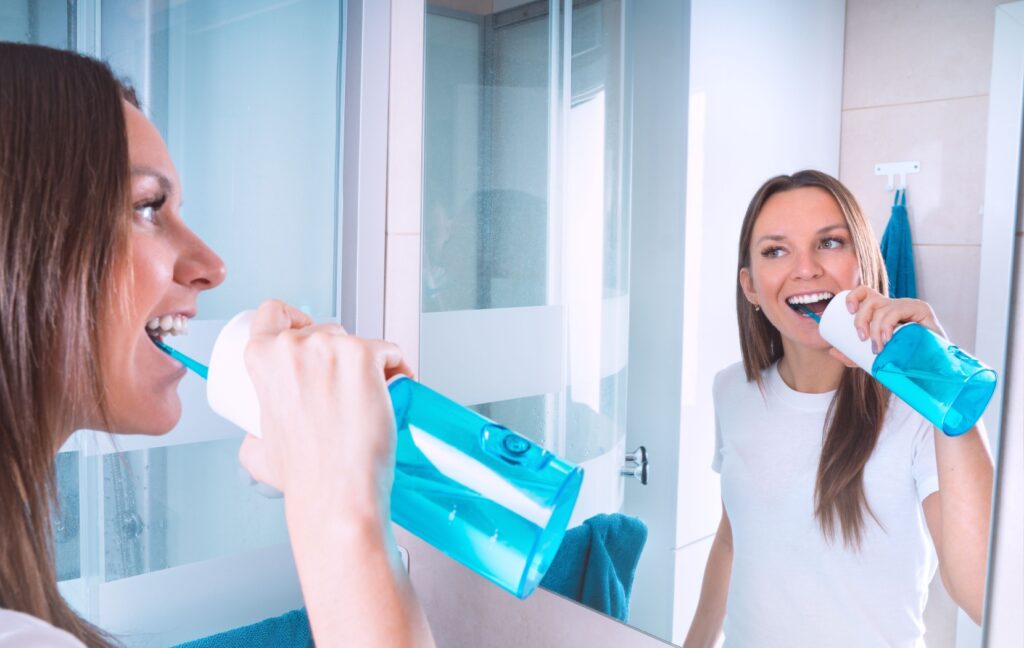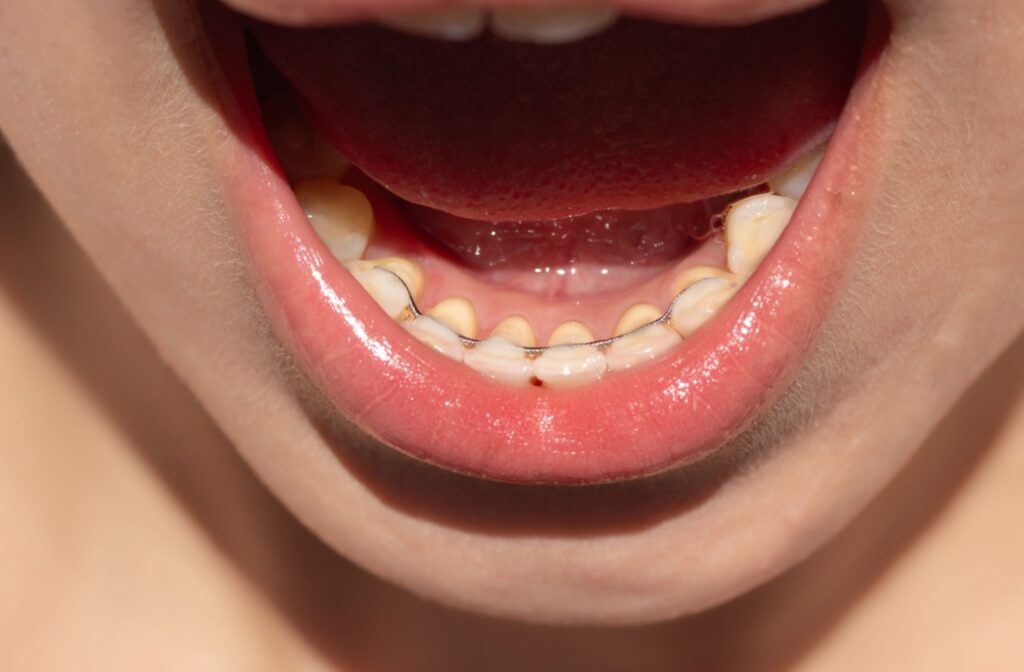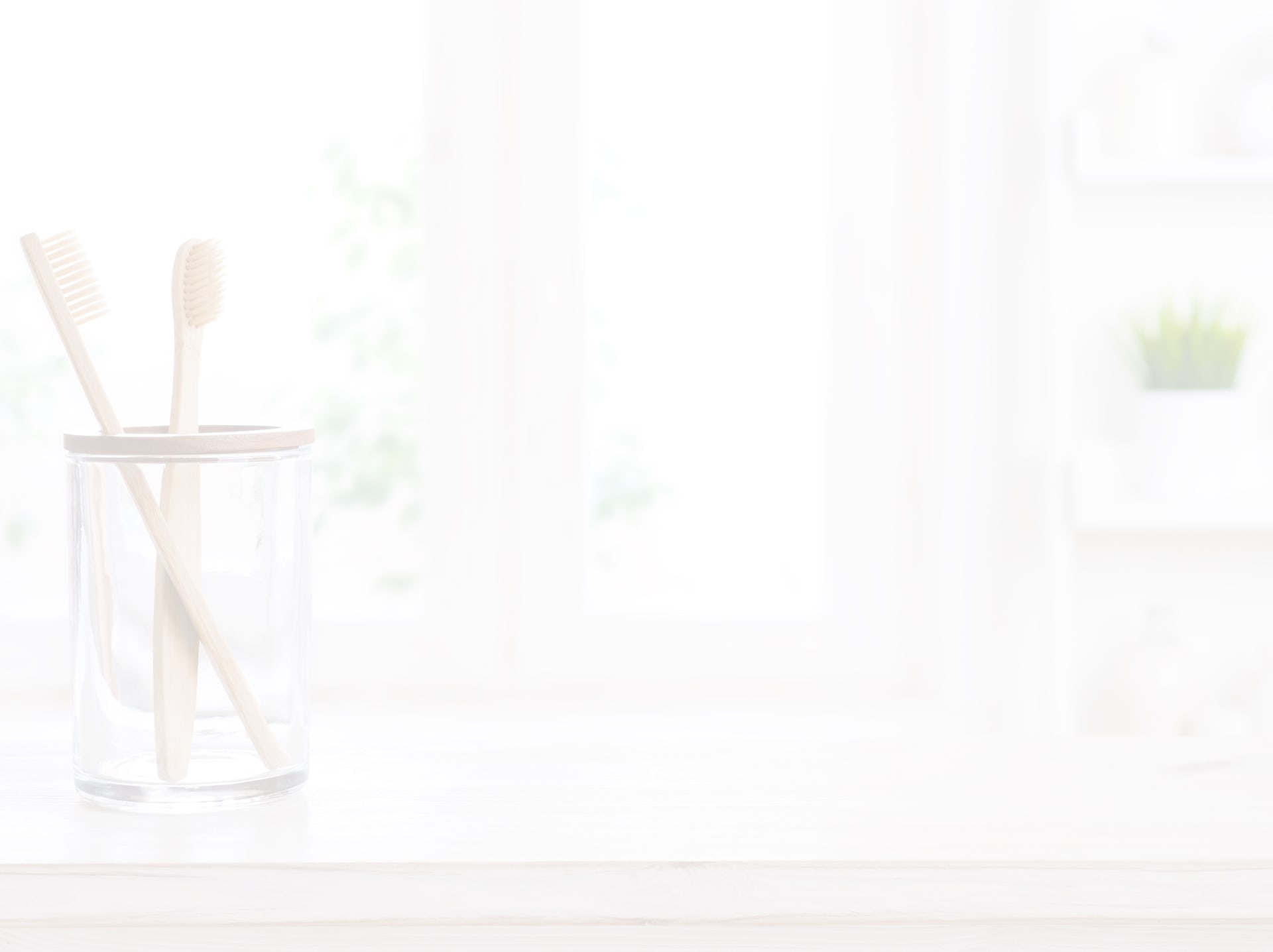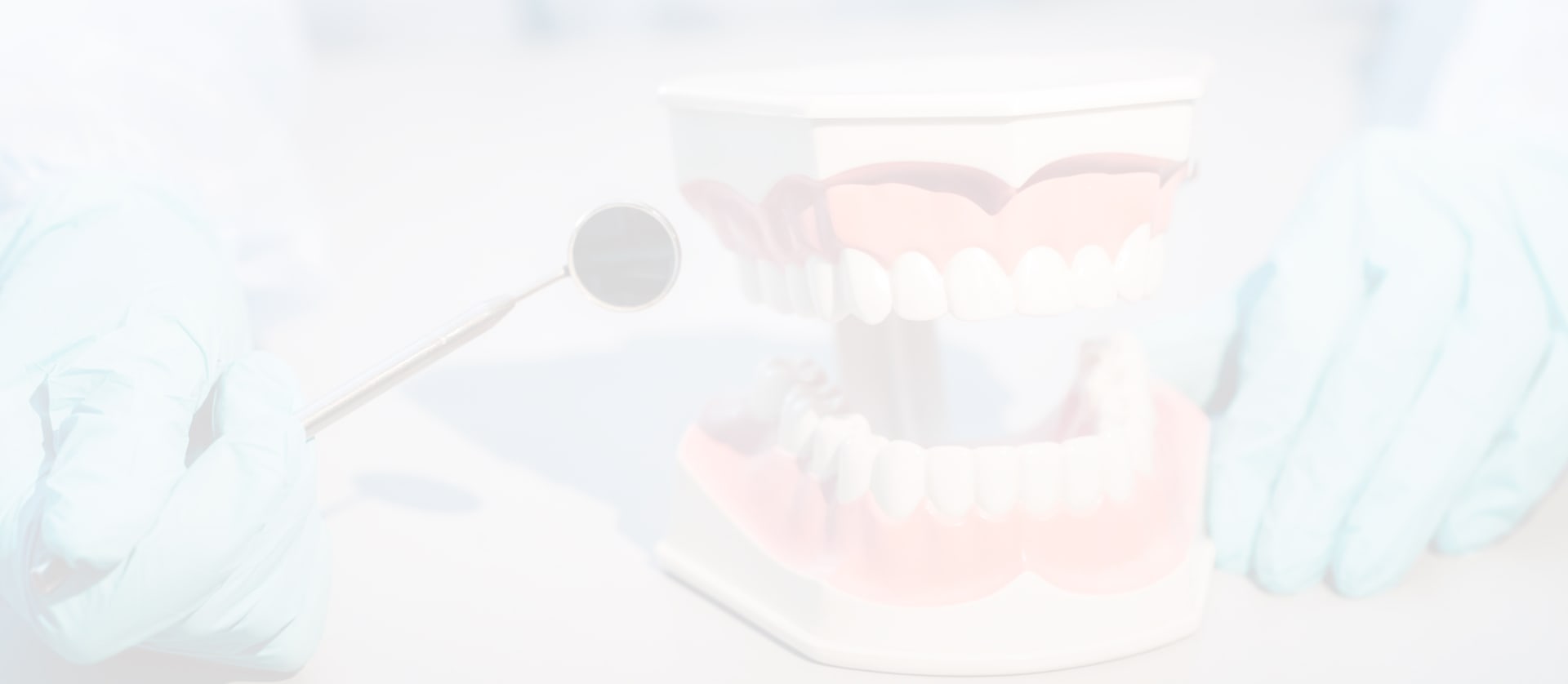A permanent retainer helps prevent your teeth from shifting back after your braces are removed. However, because permanent retainers are bonded to your teeth, it can make it hard to floss.
Fortunately, there are options to help prevent the struggles of flossing with a permanent retainer. Consider flossing solutions like a floss threader, interdental brushes, or a water flosser.
Always follow your dentist’s oral hygiene instructions. Keep up with regular dental exams so your dentist can help you identify and address issues with flossing, dental appliances, and oral health.
What Is a Permanent Retainer?
A permanent retainer is a thin wire attached to the back of your teeth after braces.
Unlike removable retainers, which you wear at specific times, a permanent retainer stays in place 24/7. Its purpose is to support your teeth and prevent them from shifting to their pre-braces position.
While permanent retainers can effectively preserve your improved smile, their fixed nature makes them a little trickier to clean thoroughly.
The Challenges of Flossing with a Permanent Retainer
Proper dental hygiene, including flossing, is crucial to keeping your teeth healthy and your retainer intact. However, flossing with a permanent retainer presents a few unique challenges, from limited spaces to the risk of accidentally damaging your retainer.
1. Tight Spaces
The wire of the retainer often runs along the back of several teeth. Unlike removable retainers, this fixed wire creates small, tight spaces that traditional floss may have trouble navigating.
2. Risk of Wire Damage
Flossing incorrectly or aggressively could loosen the bonding that holds your retainer in place, potentially leading to repair costs and delays in orthodontic progress.
3. Plaque Buildup
Permanent retainers provide additional surfaces where plaque and food particles can accumulate. Plaque buildup can lead to tooth decay or gum disease without regular cleaning.
Flossing Techniques with a Permanent Retainer

Flossing around a permanent retainer takes patience and proper technique. Understanding potential challenges is the first step. With a little practice and the right tools, you can master effective flossing, even with a permanent retainer.
You can try a combination of these tools and experiment to find what works comfortably for you.
1. Floss Threaders
Floss threaders are a lifesaver when cleaning around a permanent retainer. These small, needle-like tools allow you to thread dental floss under the retainer wire, helping you reach between each tooth.
How to use a floss threader:
- Thread about 6 inches of dental floss into the loop of the threader
- Carefully slide the threader & the attached floss under the retainer wire
- Move the floss gently up & down along the sides of each tooth & slightly under the gumline
- Avoid snapping the floss to protect both your gums & the wire
- Repeat the process for each space between the teeth covered by your retainer
2. Interdental Brushes
Interdental brushes are tiny brushes designed to clean between teeth and around fixed appliances like a permanent retainer. They can help remove plaque from narrow or hard-to-reach spaces.
How to use an interdental brush:
- Gently insert the brush between your teeth near the retainer wire
- Use small, back-and-forth motions to clean around the retainer & between teeth
- Rinse the brush & move on to the next section of your mouth
3. Water Flossers
If threaders or interdental brushes feel too cumbersome, a water flosser can offer a modern, technology-enhanced alternative.
Devices like the Waterpik use pressurized water to clean between teeth and flush out debris around your retainer. You might need a little practice at first, but they’re easy to use, especially for those with arthritis. Water flossers are also effective for reaching those hard-to-clean spots.
Tips for using a water flosser:
- Start with a lower pressure setting & gradually increase as you get comfortable
- Aim at the spaces between your teeth & along the gumline
- Angle the flosser tip to clean around the retainer wire effectively
Additional Oral Hygiene Tips for Permanent Retainers
Flossing is crucial, but it’s just one aspect of maintaining oral hygiene with a permanent retainer. By combining healthy practices with regular flossing, you can maintain your oral health and extend the lifespan of your permanent retainer.
1. Brush Thoroughly
Brush your teeth twice daily with fluoride toothpaste and a soft-bristled toothbrush. Pay close attention to the area around your retainer wire to prevent missed plaque or food particles.
2. Attend Regular Dental Appointments
Schedule regular check-ups to have your retainer inspected and your teeth professionally cleaned. Your dentist can identify potential issues early and provide personalized advice about your oral care routine.
3. Be Mindful of Your Diet
Sticky, chewy, or hard foods can damage or dislodge your retainer wire. Stick to a balanced diet and avoid excessive consumption of sugary snacks to reduce the risk of decay.
4. Use Mouthwash
A fluoride or antibacterial mouthwash can provide extra protection by reaching areas around the retainer that brushing and flossing might miss.
Keep Your Smile Healthy with Fairlawn Dental Centre
Flossing with a permanent retainer might feel challenging, but it’s a skill worth mastering. These small but practical steps help keep your teeth healthy, your smile bright, and your retainer working as it should.At Fairlawn Dental Centre, we’re here to support you every step of the way. Schedule an appointment with us today so we can help you achieve your oral health goals.










